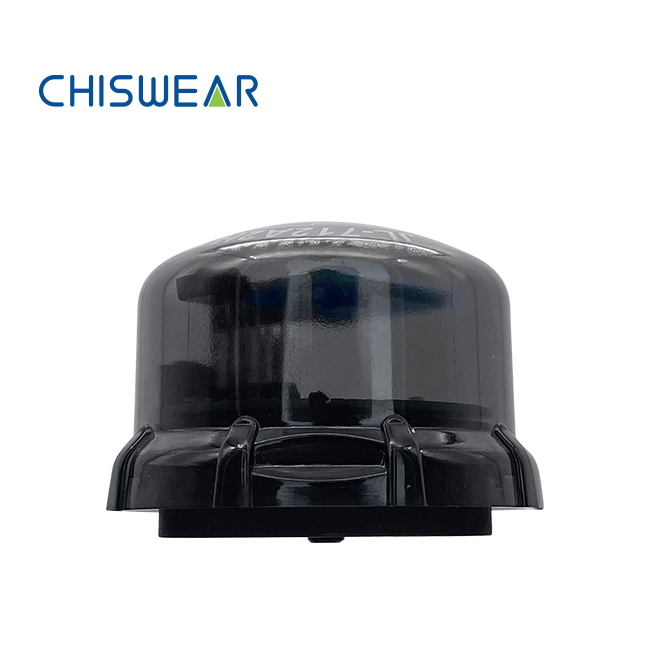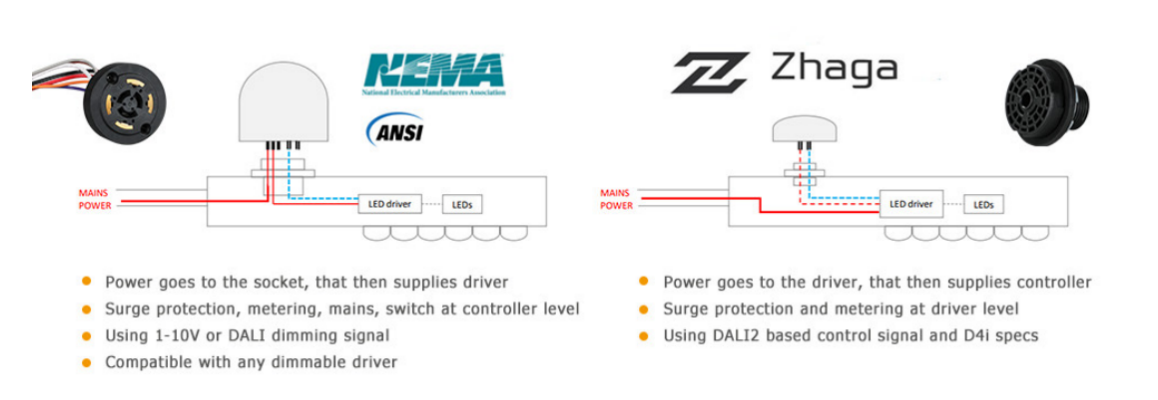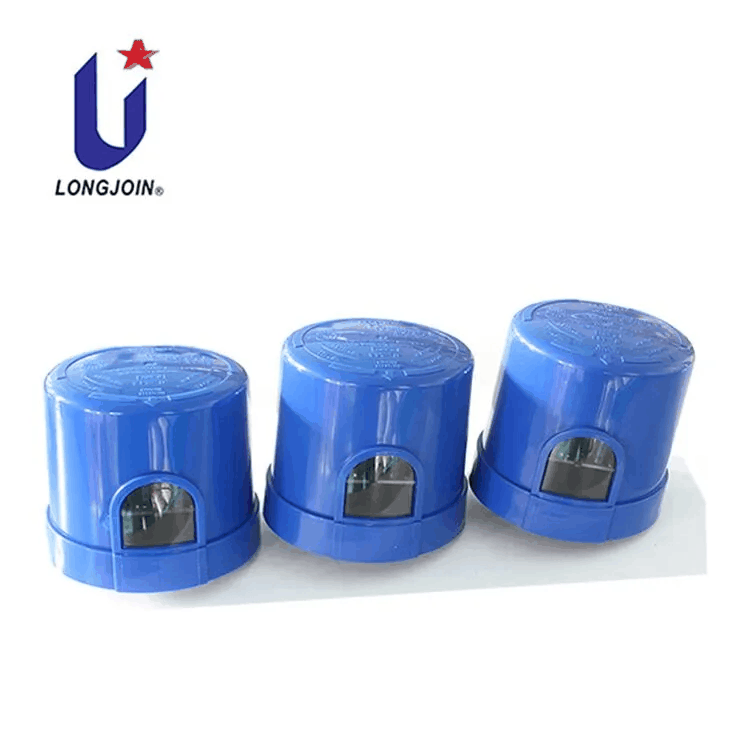How can we help you?

How can we help you?


Smart lighting is changing fast. You need to pick the right control interface carefully. Zhaga and NEMA are two leading standards. They each offer unique benefits for different uses. Cities are getting smarter and greener. This generally means that as a Lighting industry, you must know these two frameworks.
This article looks at the main differences, how each is used, and what may come next. It guides you to pick wisely for your next lighting project.
Zhaga leads in future lighting solutions. Its fixtures are flexible, small, and can communicate with smart systems. But what makes it different? And how is it used in modern cities around the world? In this section, we’ll explore the origins, advantages, and core functionality of the Zhaga standard, with a particular focus on Book 18 — a foundational guideline for smart city integration.

The Zhaga Consortium began in 2010. It sets standards for how parts fit together in LED lights. Zhaga helps different manufacturers work together. It speeds up smart lighting development and makes city lighting ready for the future.
Zhaga Book 18 sets a smart link for outdoor lights. It lets lights connect to sensors or communication modules. It uses a plug‑and‑play approach. It works smoothly between certified control nodes and Zhaga‑compliant luminaires. This cuts down on installation complexity. It makes lighting control devices fit smoothly into smart city platforms.
● Standardized Interface: Ensures compatibility across brands and devices.
● Compact Design: Designed for sleek integration in modern urban environments.
● Smart Communication: Utilizes DALI-2 and D4i protocols for intelligent lighting responses.
● Low Power Consumption: Ideal for energy-efficient infrastructure.
● High Efficiency: Optimized for precise photocell lighting sensor control.
Zhaga is ideal for:
● Smart street lighting.
● Intelligent park lighting.
● Building façade lighting.
These use cases highlight its effectiveness in locations where aesthetics and advanced automation are priorities.
Zhaga Book 18 Benefits | Description |
Compact Size | Fits modern, slim luminaires |
D4i Support | Enables two-way data communication |
IP66 Protection | Strong resistance against dust and water |
Interoperability | Simplifies vendor selection |
Smart Ready | Perfect for smart city upgrades |
XXXXXNEMA lighting control is one of the most trusted frameworks in the industry. It is especially popular in North America. It has decades of real use. It is strong and reliable in tough outdoor conditions. But how does it differ
NEMA is the National Electrical Manufacturers Association. Its rules have guided lighting equipment in North America for many years. ANSI C136.10 and C136.41 give exact rules for locking photocontrol sockets. They also explain how to use photoelectric sensors. These are the backbone of traditional municipal lighting systems.
● Traditional Standard: With decades of history, it's deeply entrenched in outdoor lighting.
● High Durability: Built to withstand harsh environments over long periods.
● Wide Adaptability: Compatible with 3-pin, 5-pin, and 7-pin configurations.
● Larger Size: Accommodates more robust components.
NEMA shines in:
● Municipal roadways
● Stadium lighting
● Industrial parks and highways
Its sturdy build makes it the go-to for locations that demand long-lasting solutions.
NEMA Feature | Description |
ANSI Compliance | Standardized performance metrics |
Versatile Pins | 3-pin, 5-pin, and 7-pin variations |
Supports Photocontrol | Ideal for dusk-to-dawn automation |
High Durability | Rugged and field-tested |
Long Service Life | Excellent for remote maintenance-free use |

With both Zhaga and NEMA playing key roles in outdoor lighting infrastructure, a side-by-side comparison can reveal which is more suited for specific applications. Should you opt for compact intelligence or rugged endurance? This section highlights their technical and practical distinctions.
Feature | Zhaga Book 18 | NEMA (ANSI C136.10/C136.41) |
Standard | Zhaga Book 18 | ANSI C136.10 / C136.41 |
Socket Type | 4-pin | 3-pin, 5-pin, 7-pin |
Size | Compact | Larger |
Communication | DALI-2, D4i | 0-10V, DALI |
Power Consumption | Low | Higher |
Application | Smart cities, modern installations | Traditional municipal projects |
Protection Level | IP66 | Varies |
As cities become smarter and infrastructure more connected, the type of lighting control used can directly influence operational efficiency and energy consumption. But which system leads the pack in future readiness?
The lighting industry is evolving with new demands for:
Remote control light access.
Automatic light sensor operation
Lower energy use.
Real-time data feedback luminaires.
● Zhaga is leading the innovation curve with high compatibility for IoT applications, smaller form factors, and simplified system upgrades.
● NEMA continues to provide dependable infrastructure for established environments where durability is prioritized over modular intelligence.
Future Readiness | Zhaga | NEMA |
Smart City Ready | Yes | No |
Wireless Sync | Yes | No |
LED Native | Yes | Yes |
Global Use | Yes | Yes |

How Can Longjoin Assist in Smart Lighting Upgrades?
Looking for a supplier that understands both legacy systems and modern technologies? Longjoin provides a full suite of solutions designed for forward-thinking municipalities and organizations. since photo cell sensor compatibility to certified Zhaga and NEMA parts, Longjoin bridges the old and the new.
Longjoin offers a comprehensive line of photocell for street light products and smart socket standards:
These are built to suit evolving lighting technologies across regions.
●Global Certification: Products meet ISO, CE, RoHS, and other regulatory needs.
●Customization: Whether it’s a dusk to dawn photocell or photo switch sensor, Longjoin offers tailored manufacturing.
●End-to-End Support: this design consultation to post-installation services, Longjoin partners with clients through every stage.
Zhaga and NEMA both play vital roles in today's lighting systems. Zhaga’s compact size and intelligent design make it the perfect fit for tomorrow’s smart cities, while NEMA provides time-tested durability for today’s infrastructure. Choosing the right socket is about application, environment, and future adaptability. Let your lighting control decision be driven by long-term goals, technical needs, and ecosystem compatibility.
External Links:
● https://www.dali-alliance.org/d4i/
● https://www.dali-alliance.org/dali2/
● https://en.wikipedia.org/wiki/RoHS
● https://www.assent.com/resources/knowledge-article/what-is-ce-certification/
● https://www.iso.org/home.html